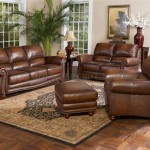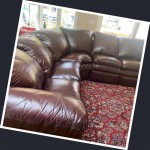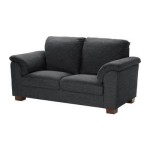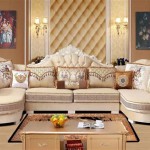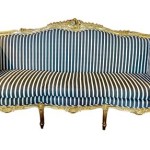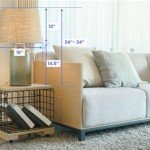Does Grey Walls Go With a Brown Sofa? Exploring Interior Design Harmony
The question of whether grey walls complement a brown sofa is a common consideration in interior design. The answer, while generally leaning towards a positive affirmation, is nuanced and depends heavily on the specific shades of grey and brown involved, as well as the overall design aesthetic being pursued. The interplay between these two neutral colors can create sophisticated, comfortable, and stylish living spaces when thoughtfully executed.
Grey and brown, both serving as foundational neutrals, offer a versatile backdrop for a multitude of design styles. Grey walls provide a sense of calmness and neutrality, capable of highlighting other colors or textures within a room. Brown sofas, often chosen for their durability and warm aesthetic, bring a grounded and comforting presence to a space. The successful pairing of these elements, however, requires careful attention to detail, ensuring that the undertones of each color work in harmony to create a cohesive and visually appealing environment.
Understanding Undertones: The Key to Harmonious Color Pairing
The most crucial aspect of pairing grey walls with a brown sofa lies in understanding and coordinating the undertones of each color. Undertones are the subtle hues that lie beneath the surface color, influencing how it appears and interacts with other colors. Grey, for instance, can have cool undertones (blue, green, or purple) or warm undertones (brown, beige, or yellow). Similarly, brown can range from cool (with hints of grey or purple) to warm (with hints of orange or red).
When combining grey walls and a brown sofa, it is essential to match the undertones to create a cohesive and balanced aesthetic. For example, a warm grey wall with beige undertones will typically pair well with a warm brown sofa that has hints of orange or red. Conversely, a cool grey wall with blue undertones will complement a cool brown sofa that leans towards a greyish or purplish hue. Mismatched undertones can result in a discordant and visually jarring effect, making the room feel unbalanced and uninviting.
To identify undertones, compare the colors to pure white or other neutral shades. This comparison will help reveal the underlying hues that are less apparent when the colors are viewed in isolation. Natural light also plays a significant role in how colors appear, so it is important to assess the undertones in both natural and artificial lighting conditions. Large paint swatches and fabric samples should be used to visualize how the colors will look in the actual space, taking into account the existing lighting and architectural features.
Another consideration is the intensity or saturation of the colors. A very dark grey wall may overpower a light brown sofa, while a pale grey wall may lack sufficient contrast against a similar shade of brown. Experimenting with different shades and intensities is necessary to find the perfect balance that complements the room's size, lighting, and overall design style.
Leveraging Contrast and Texture for Visual Interest
While harmonious undertones are crucial, incorporating contrast and texture can elevate the pairing of grey walls and a brown sofa from simple to sophisticated. Contrast can be achieved through varying shades of grey and brown, as well as through the strategic use of accent colors. Texture, on the other hand, adds depth and visual interest, preventing the space from feeling flat and monotonous.
To create contrast, consider using a darker shade of grey on the walls against a lighter brown sofa, or vice versa. This contrast will help define the separate elements of the room and prevent them from blending together. Accent colors can also be used to break up the neutrality of grey and brown, adding pops of color that draw the eye and create visual interest. Colors such as teal, mustard yellow, or burnt orange can complement both grey and brown, adding warmth and vibrancy to the space. The choice of accent color should be carefully considered to align with the overall design style and personal preferences.
Texture can be introduced through various elements, such as fabrics, cushions, throws, and rugs. A velvet sofa, for example, will add a luxurious and tactile element to the room, contrasting with the smooth surface of the walls. Textured cushions and throws can further enhance the comfort and visual appeal of the seating area. A rug with a subtle pattern or texture can ground the space and tie together the different elements of the room. Natural materials, such as wood, stone, and metal, can also add texture and warmth to the space, creating a more inviting and organic feel.
Different textures can also evoke different moods. For instance, rough textures like exposed brick or distressed wood can create a rustic and industrial aesthetic, while smooth textures like silk or glass can create a more modern and elegant feel. The key is to mix and match textures in a way that complements the overall design style and adds visual interest without overwhelming the space.
Considering Lighting and Room Size
Lighting and room size significantly influence how colors appear and interact with each other. Natural light can enhance the warmth of brown and grey, while artificial light can alter their perceived hue and intensity. Small rooms require lighter shades to create the illusion of space, while larger rooms can accommodate darker shades without feeling cramped.
In rooms with abundant natural light, both grey and brown can appear warmer and more inviting. However, in rooms with limited natural light, darker shades of grey can make the space feel gloomy and claustrophobic. In such cases, lighter shades of grey, such as a soft dove grey or a warm greige, are more appropriate. The placement of light sources should also be carefully considered to maximize the impact of natural light and minimize the shadows that can darken the space.
Artificial light can be used to compensate for a lack of natural light, but it is important to choose the right type of light. Warm white light bulbs will enhance the warmth of brown and grey, while cool white light bulbs will create a more modern and crisp aesthetic. Dimmable light fixtures allow for adjusting the intensity of the light to create different moods and effects. Task lighting, such as floor lamps and table lamps, can also be used to highlight specific areas of the room and add visual interest.
In small rooms, it is generally best to use lighter shades of grey and brown to create the illusion of space. Darker shades can make the room feel smaller and more enclosed. Furniture should be scaled appropriately to the size of the room, and clutter should be minimized to create a more open and airy feel. In larger rooms, darker shades of grey and brown can be used to create a more dramatic and intimate atmosphere. Larger furniture pieces can be used to anchor the space, and ample seating can be provided to encourage socializing and relaxation.
Furthermore, the orientation of the room can play a part. North-facing rooms tend to have cooler light, so warmer greys and browns may be needed to counteract the coldness. South-facing rooms get warmer light, so cooler greys and browns can help balance the warmth. East-facing rooms get warm light in the morning and cooler light in the afternoon, while west-facing rooms get cooler light in the morning and warm light in the afternoon. These variations in light should be considered when choosing the shades of grey and brown for the walls and sofa.
Ultimately, the successful pairing of grey walls and a brown sofa requires careful consideration of undertones, contrast, texture, lighting, and room size. By paying attention to these details, it is possible to create a harmonious and stylish living space that reflects personal taste and preferences.
Does Brown Furniture Go With Grey Walls Quora

What Color Walls Goes Best With Brown Sofa 25 Suggestions Pictures Grey Dark Living Room Leather

Living Room Paint Ideas With Brown Furniture 104 Darkbrownlivingroom Decor Grey Walls Gray
Does Brown Furniture Go With Grey Walls Quora

Does The Color Grey Go With Brown Furniture

Decorating Around A Leather Sofa Centsational Style Brown Couch Living Room Grey

The Trendiest Ways To Style A Brown Sofa

What Wall Colors Go With Brown Furniture Ideas Images Gallery

Love And Laundry Painting Our Living Room Brown Decor Colors

The Horrid Gray Trend Is It Finally Over Laurel Home

